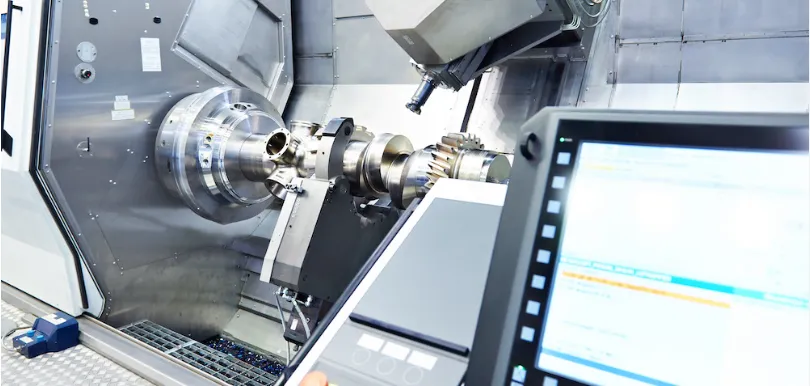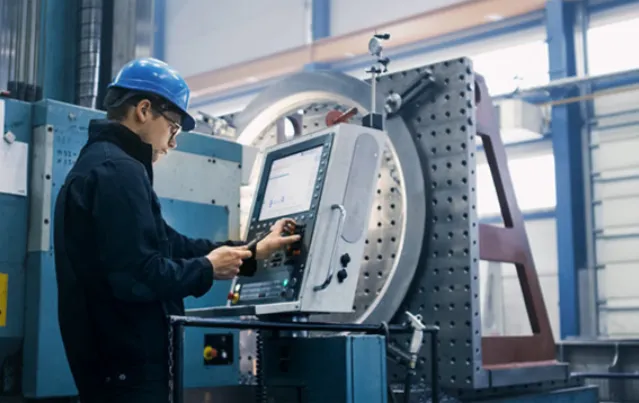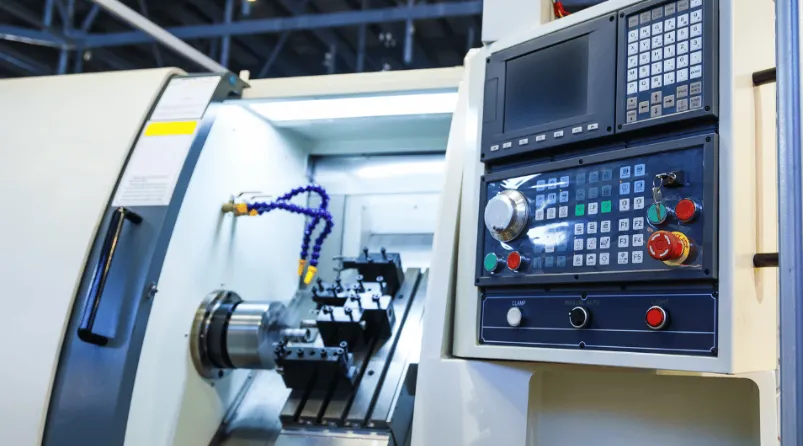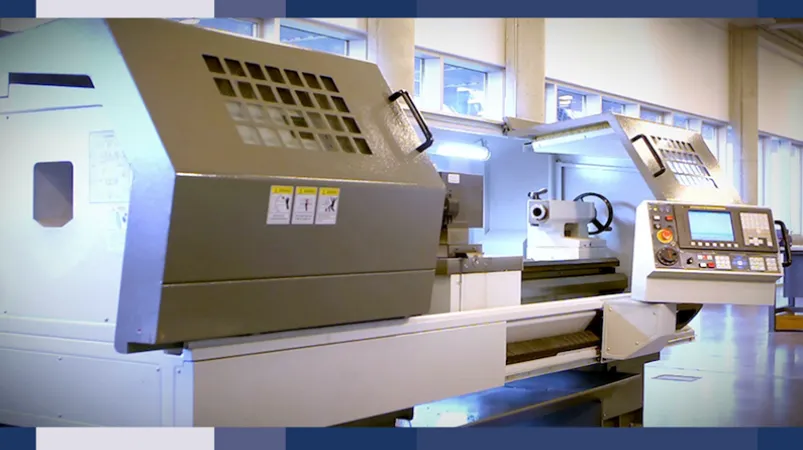Historical Development and Evolution
The origins of computer numerical control (CNC) technology trace back to the late 1940s when John T. Parsons collaborated with the Massachusetts Institute of Technology (MIT) to develop a system for producing complex helicopter rotor blades. This early work led to the first numerically controlled (NC) machines in the 1950s, utilizing punched tape systems for program input. The transition from analog NC to digital CNC occurred during the 1970s with the integration of minicomputers, enabling the storage and editing of machine instructions. A critical milestone emerged in 1976 with the introduction of the first microprocessor-based CNC controllers by companies such as Fanuc and Siemens, which significantly enhanced processing capabilities while reducing hardware costs. The International Organization for Standardization (ISO) established foundational programming standards (ISO 6983) during this period, creating a unified framework for G-code programming that persists in modified forms today.
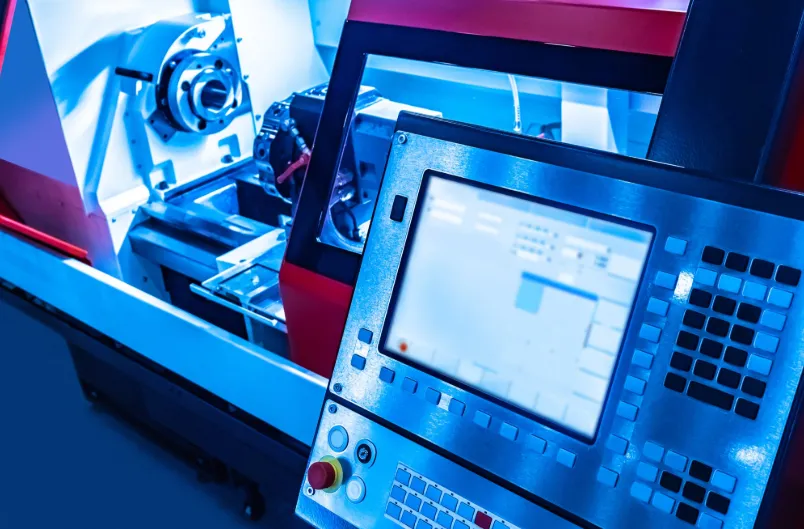 Core System Architecture
Core System Architecture
Modern CNC systems comprise three principal hardware components: the machine control unit (MCU), drive systems, and feedback mechanisms. The MCU incorporates industrial-grade processors executing real-time operating systems, with leading manufacturers utilizing PowerPC or ARM architectures for motion control computations. Servo drives regulate axis movement through pulse-width modulation (PWM) signals, with contemporary systems achieving position loop update rates exceeding 10 kHz. Rotary encoders provide closed-loop feedback, with high-resolution devices offering over 1 million counts per revolution on precision grinding machines. Linear scale feedback systems supplement rotary encoders in advanced configurations, compensating for mechanical backlash and lead screw errors. The proliferation of fieldbus networks such as EtherCAT and PROFINET has replaced traditional analog signal transmission, enabling deterministic communication with sub-millisecond cycle times between controllers and peripheral devices.
Programming Methodologies and Standards
CNC programming operates through two primary paradigms: manual G-code generation and computer-aided manufacturing (CAM) software output. ISO 6983-standard G-code remains the universal instruction set, though modern implementations incorporate vendor-specific extensions for advanced functionality. CAM systems employ post-processors to translate CAD model geometries into machine-specific code, with notable software packages including Siemens NX, Mastercam, and Fusion 360 generating toolpaths through volumetric material removal simulations. Emerging standards such as STEP-NC (ISO 10303-238) aim to replace conventional G-code with feature-based programming, enabling bidirectional data exchange between CAD/CAM systems and machine tools. Machine tool builders increasingly adopt open architecture controls, with the LinuxCNC project and RISC-based controllers providing customizable platforms for research institutions and specialized manufacturers.
Precision Mechanics and Motion Control
The mechanical realization of CNC commands depends on high-rigidity structural components and precision motion systems. Machine tool frames utilize mineral casting or epoxy granite for enhanced vibration damping, particularly in grinding and micromachining applications. Linear guideways with preloaded rolling elements maintain positioning accuracy within 5 microns per meter on standard machining centers, while hydrostatic guide systems in ultra-precision machines achieve sub-micron repeatability. Ball screw assemblies remain prevalent for axis actuation, with ground screws exhibiting lead errors below 10 microns per 300 mm. Direct-drive torque motors have gained adoption in high-speed applications, eliminating mechanical transmission elements and enabling acceleration rates exceeding 2g in some gantry-type machines. Thermal compensation systems integrate multiple temperature sensors to counteract spindle growth and structural deformation, a critical feature for maintaining geometric accuracy during prolonged machining operations.
Industrial Applications and Material Processing
CNC technology serves distinct requirements across manufacturing sectors, with machine configurations optimized for specific material classes. Aerospace applications employ five-axis machining centers with titanium-specific toolpaths, where adaptive roughing strategies maintain optimal chip loads to avoid work hardening. Automotive production lines utilize dedicated CNC transfer machines capable of processing aluminum engine blocks at cycle times under three minutes. The medical device industry relies on Swiss-type lathes for producing bone screws and orthopedic implants from cobalt-chrome alloys, achieving surface finishes below 0.4 μm Ra. Electronics manufacturing applies high-speed CNC drilling systems for printed circuit board (PCB) fabrication, with spindle speeds reaching 300,000 RPM for microvia formation. Recent advancements in ceramic matrix composite machining have driven the development of diamond-coated tooling and ultrasonic-assisted CNC systems to address these materials’ abrasive characteristics.
Metrology and Quality Assurance Integration
In-process measurement technologies have become integral to CNC systems, enabling closed-loop quality control. Touch-trigger probes with strain gauge sensors provide workpiece setup verification with repeatability of ±1 micron, while laser tool setters measure cutter diameter and length offsets with 0.5-micron resolution. On-machine vision systems perform optical inspection using telecentric lenses and structured light projection, particularly for verifying complex freeform surfaces. Advanced implementations incorporate X-ray computed tomography (CT) for internal feature measurement, though this requires specialized machine designs with reduced structural mass near the work zone. Data from these systems feeds statistical process control (SPC) software, with machine learning algorithms identifying tool wear patterns and predicting dimensional drift before exceeding tolerance limits.
Computational Enhancements and Industry 4.0 Integration
Contemporary CNC systems increasingly incorporate industrial Internet of Things (IIoT) capabilities through OPC UA communication protocols. Machine tool builders implement condition monitoring systems that track spindle vibration spectra, with fast Fourier transform (FFT) analysis detecting bearing wear at early stages. Cloud-based analytics platforms process production data from multiple machines, optimizing cutting parameters across factory networks through federated learning approaches. Digital twin technology creates virtual machine representations that simulate thermal behavior and structural dynamics, enabling preemptive compensation of positioning errors. Cybersecurity has emerged as a critical consideration, with IEC 62443 standards governing network segmentation and access control for CNC equipment connected to enterprise systems.
Economic and Workforce Considerations
The capital expenditure for CNC equipment varies significantly by capability class, with three-axis vertical machining centers ranging from $50,000 for entry-level models to $500,000 for high-performance configurations. Five-axis systems command premiums of 100-300% over comparable three-axis machines, while ultra-precision lathes for optical component manufacturing may exceed $2 million. Total cost of ownership analyses must account for energy consumption patterns—spindle acceleration being the most power-intensive operation—as well as maintenance costs averaging 5-8% of initial investment annually. Workforce development challenges persist, with the National Institute of Metalworking Skills (NIMS) reporting increasing demand for operators proficient in both traditional machining principles and CNC programming. Educational institutions have responded by integrating virtual CNC simulators with physical machine training, reducing the risks associated with novice programming errors while maintaining pedagogical effectiveness.
Environmental Impact and Sustainable Practices
Energy efficiency improvements in CNC systems have focused on regenerative drive systems that recover braking energy, with documented savings of 15-25% in high-duty cycle applications. Coolant management presents significant environmental challenges, leading to adoption of minimum quantity lubrication (MQL) systems that reduce fluid consumption by 90% compared to flood cooling. Machine tool enclosures with aerosol extraction systems mitigate particulate emissions during composite material machining, addressing occupational health concerns. The European Machine Tool Committee (CECIMO) has established sustainability guidelines promoting modular machine designs that facilitate component reuse and material recycling at end-of-life. Research continues into dry machining processes for aluminum alloys, though tool life limitations remain a barrier to widespread implementation.
Emerging Research Directions
Academic and industrial research initiatives are exploring several frontier areas in CNC technology. The National Institute of Standards and Technology (NIST) is developing standards for additive-subtractive hybrid manufacturing systems, which combine powder bed fusion with precision machining in a single work envelope. Control system research focuses on real-time adaptive machining algorithms that respond to sensor-detected material heterogeneity, particularly relevant for remanufacturing applications. Nanotechnology applications are driving advances in sub-micron positioning systems, with laser interferometer feedback enabling deterministic motion at the nanometer scale. Collaborative robotics integration presents both technical and safety challenges, as current ISO 10218 standards require significant modifications to accommodate human-robot interaction in CNC workspaces. Materials science innovations in cutting tool substrates, particularly silicon carbide-reinforced tungsten carbides, are extending feasible cutting parameters for high-temperature alloys used in next-generation aerospace engines.

